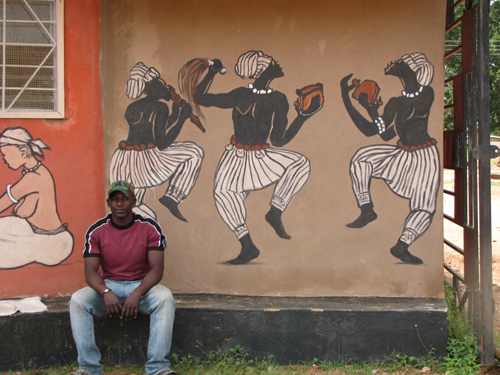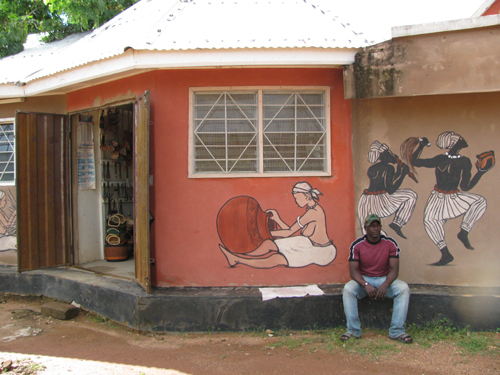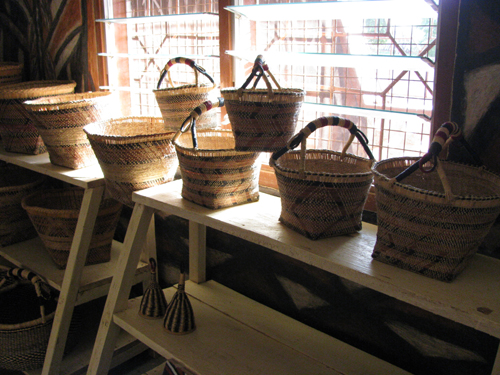Smocks, also known as fugu, are a traditional man’s garment.
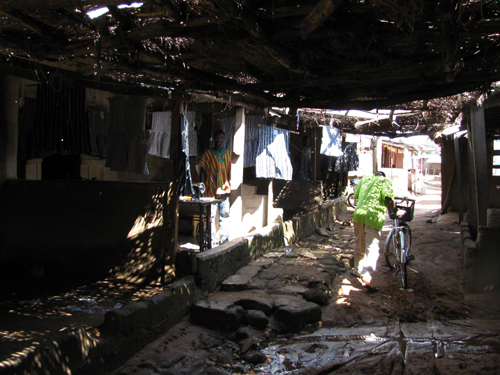
This is a place that’s not in any guide book.
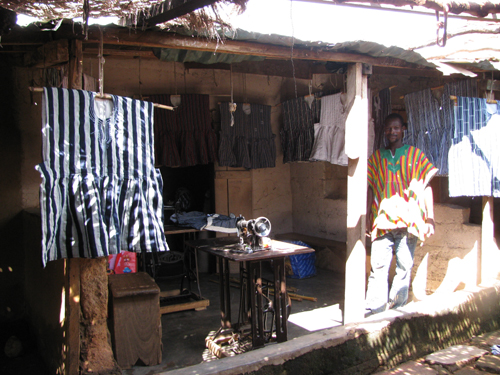
Every smock tailor’s shop is outfitted basically the same way. They have a little bit of storage space and a foot operated sewing machine. There’s no electricity here.
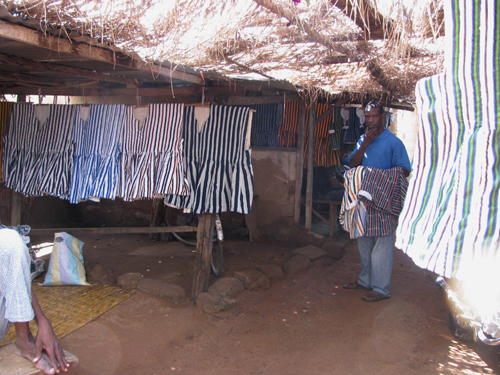
I walked through the pathways, admiring the beautiful garments. There was a dazzling array of colors but only two styles: short or no sleeves.
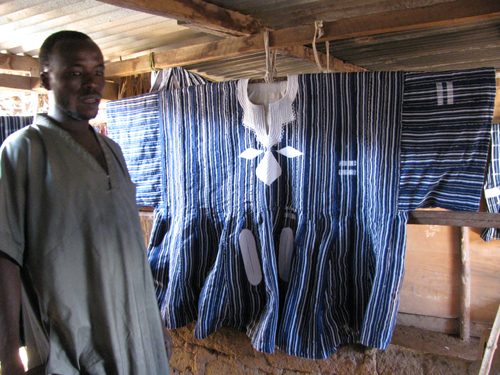
The smocks were very well made, with locally hand woven cloth. I found out later that it is known as gonja cloth. Kente cloth weaving was developed from gonja weaving techniques.
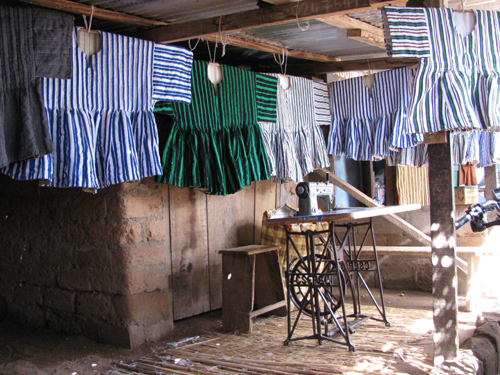
Gonja cloth is made with cotton cloth strips of about four inches wide, joined together to make a large piece of cloth. The material is very strong and durable. The smocks are also partially lined.

The shopkeeper at the Crafts Village on the left and his brother the smock maker.
I decided that I would definitely get the red, white and blue striped smock. I tried it on and found it was a little tight around the neck, so I asked if he could make an adjustment.

While I was waiting for the alteration to be finished, another man brought a piece of cloth to show me. The cloth was roughly shawl sized in a beautiful indigo tie dye. I had no idea what I was going to do with it, but as soon as I laid eyes on that piece of cloth, I knew I was buying it. The man wanted 40 cedis for it.
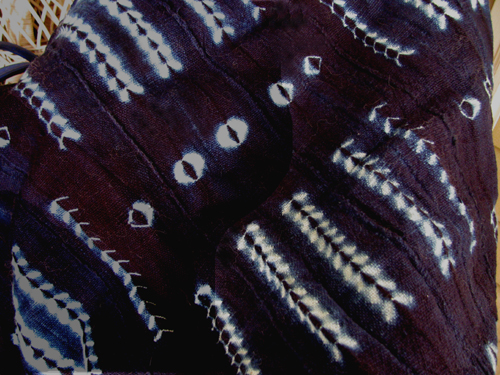
If you’re going to be in Bolgatanga and want to visit the smock tailors, ask anyone in the new market area to point you the way or stop by the Crafts Village and ask any of the shopkeepers how to get here. Most of the shops have smocks for sale, and if they do, they should know how to direct you. None of the streets had names that I could see. It’s worth the effort to find the place and a lot more interesting than the Crafts Village.
[This post has been abbreviated. The full story is in the Travels in Ghana e-book available at Amazon and Smashwords.]
Read Full Post »





















